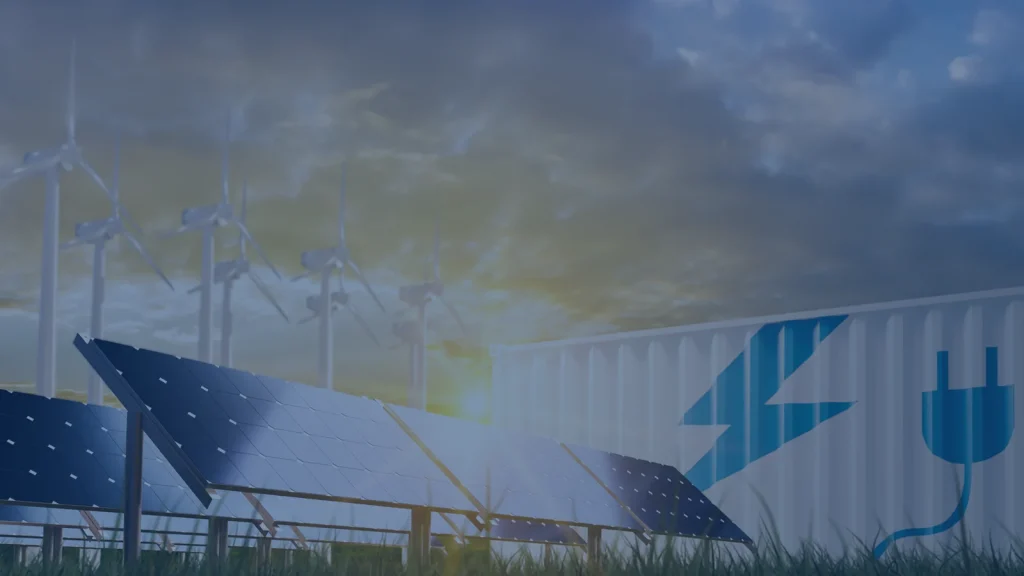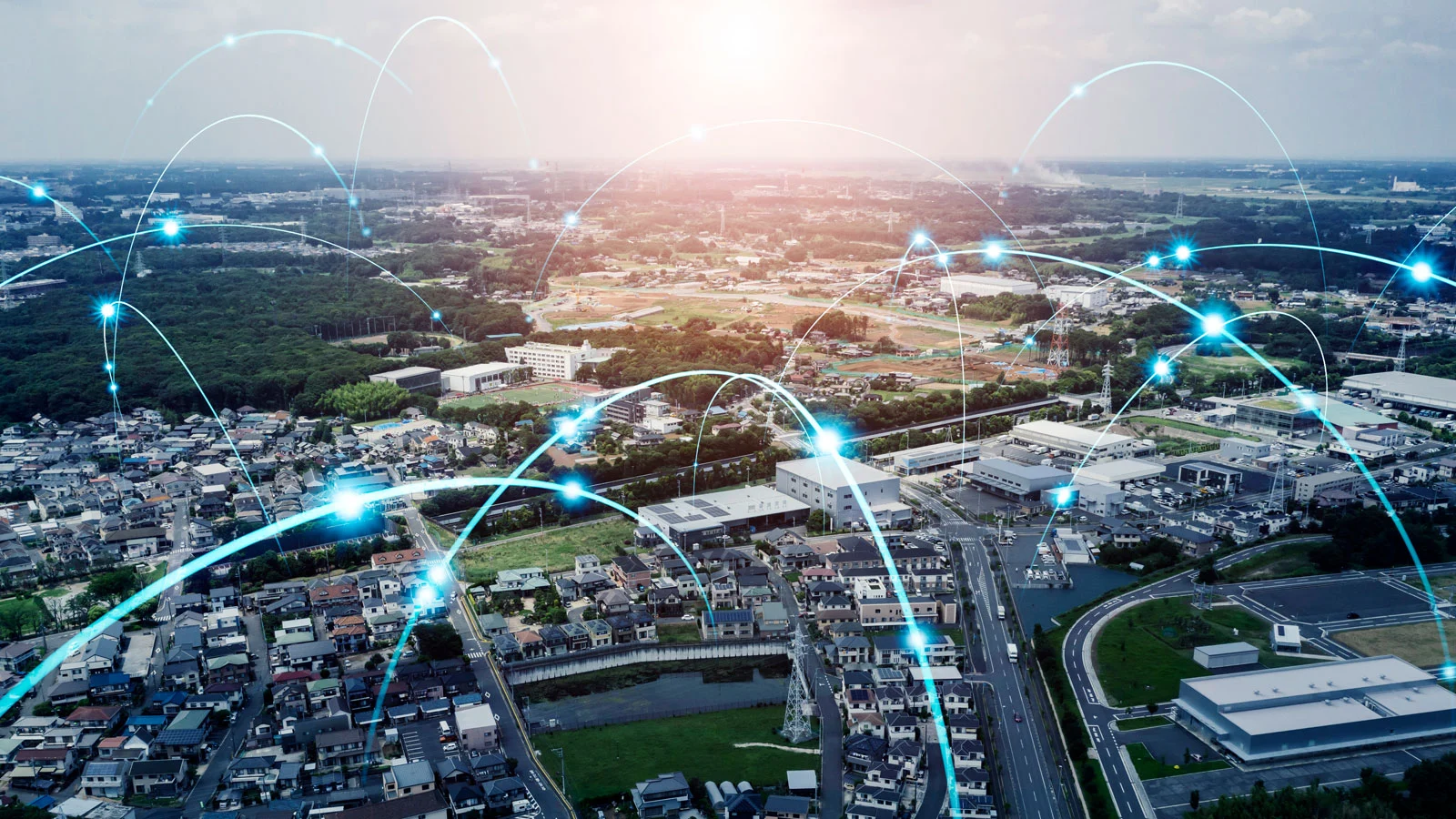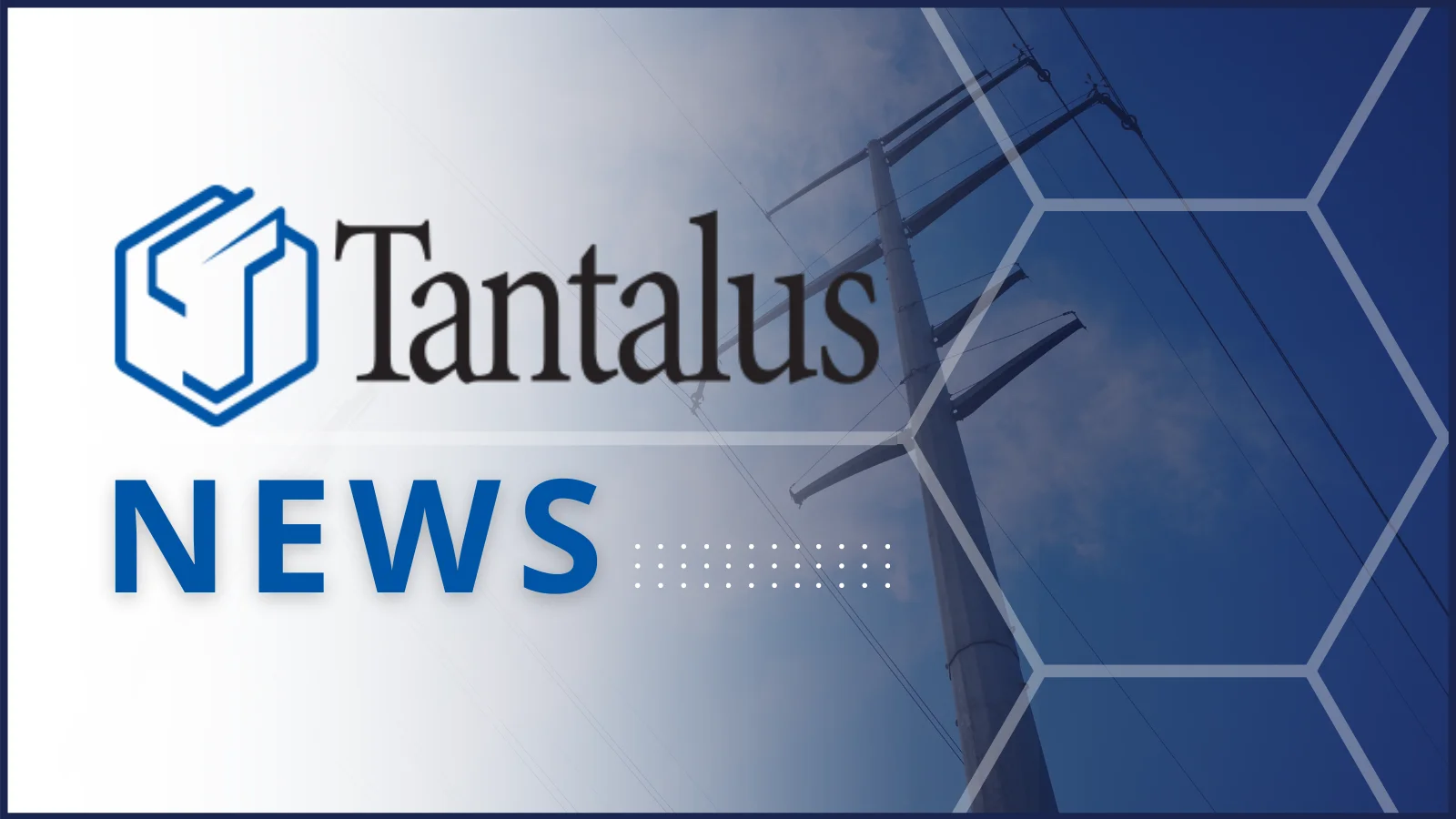
By Pete Londa
CEO, Tantalus
The utility of the future will face a perfect storm of operational and environmental challenges. It is a future in which demand for power threatens to exceed supply, electric vehicles (“EVs”) and distributed energy resources (“DERs”) threaten to destabilize the grid with power generated at the grid edge, and extreme weather events threaten to make power outages the new norm. It’s a future in which utilities need more visibility, flexibility and control at the edge than ever before. The only way to thrive in this future is for electricity and data to flow together, in parallel, all the way from SCADA to the edge.
In short, the utility of the future needs to make every kilowatt and kilobyte count. It’s the only way for utilities to achieve true sustainability across all core functions—finances, operations, environmental impact, regulatory compliance, and serving their communities.
We are living through the Electrification of Everything
It’s plain to see wherever we look—EV adoption, online shopping, cloud computing and server farms, computer chips embedded in every device and appliance across all industries—virtually every aspect of daily life is becoming electrified. With the continued acceleration of this trend, the United States EIA expects global energy demand to increase 47% in the next 30 years.
The bottom line is, we need as much reliable electricity as possible. Because of electric vehicle adoption alone, it is estimated that U.S. power production will need to double by 2050.
We are also living through the Decarbonization of Everything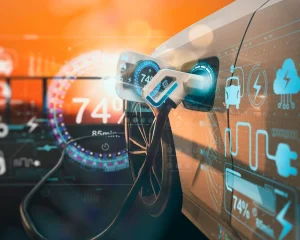
Because of government policy, increasing regulations and consumer demand, people everywhere are investing more in renewable energy and trying to move away from fossil fuels and coal. Renewables are becoming a greater share of total energy output while traditional sources of power production are declining.
In addition, consumer adoption of technologies such as rooftop solar, home battery storage and EVs is putting an even greater strain on a grid that is already outdated and in dire need of modernization. The traditional distribution grid was never designed to absorb consumer-generated electricity at this level. Without additional visibility at the edge and the ability to safeguard transformers, utilities face major safety issues and operational risks.
Meanwhile, Mother Nature is serving up challenges of her own
Wildfires, hurricanes, heatwaves, winter storms and other extreme weather events are impacting the electric grid on a global scale, resulting in increasingly frequent outages that threaten lives and livelihoods. With an 83% increase in extreme weather disasters from 2000 to 2020, grid resilience has never been more important, nor has the need to for more visibility, command and control at the edge. This is yet another reason we need kilowatts of electricity and kilobytes of data flowing seamlessly together from headquarters to the edge and back in near real time.
It’s time to make every kilowatt—and kilobyte—count
Increased demand for power. New consumption patterns and consumer-generated power at the edge. A reduced ability to scale. A world that is becoming more volatile with each passing year. These are just a few examples of what we are dealing with today, and it’s only getting more intense.
That is why the utility of the future will need more visibility, which will enable more command and control at the edge than ever before. It is the only way to safeguard the communities who rely on public power. There is no room for waste. There will be no surplus… and there is less room for error in the face of an emergency. At the same time, transformative new data-driven technologies are emerging, making it possible for utilities to deliver innovative services to the community.
Fortunately, there is a way for utilities to not only become truly sustainable in the face of all this change, but to become innovative change agents, themselves. There are ways to improve reliability and resilience, offer valuable new services and power the next generation of connected devices. But the only way to get there is with a direct line of sight into what is unfolding at every point along the distribution grid—from headquarters, to the substation, to the meter and into the premise—and that takes a truly interoperable and secure smart grid.
The new mission: Become a Truly Sustainable Utility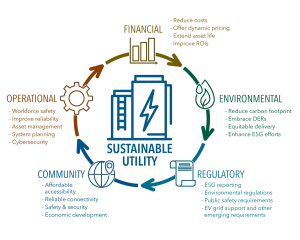
The utility of the future needs to achieve true sustainability along five critical vectors:
But to create inherent sustainability for a utility’s operations, finances, environmental impact, regulatory compliance and community empowerment, it is critical to first reimagine the smart grid as an intrinsically interoperable platform. It is a platform that operates less like a one-way, analog delivery grid and much more like a neural-network computing grid. It is a platform in which each kilowatt of electricity is paired with contextual data about the electricity itself. It is a platform in which granular data can be accessed, transported and analyzed in real time along any point of the grid, including behind the meter, no matter the device or protocol.
The new mandate: Modernize the utility and digitize the grid:
What was once a one-way flow of power…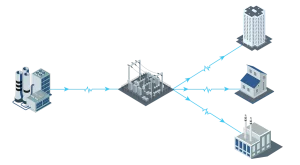
… has become a multi-directional, decentralized network of connected devices. Homes, businesses and micro-grids are all now contributing to the flow of power through EV and DER adoption.
With so much happening behind the meter, utilities need visibility, command and control from headquarters to the substation and straight into the home or business. In short, utilities need SCADA all the way to the edge.
This is a bold vision, yes—but it’s one Tantalus is already making a reality. This is a vision we must continue to work towards if utilities are to continue powering the next decade of prosperity for their cities. Because managing electricity with up-to-the-moment data is the only way utilities can achieve the visibility that enables the command and control they need to adapt to an increasingly unpredictable future.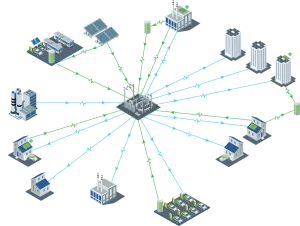
Now, as with any data-driven platform, cybersecurity is of paramount importance. Data interoperability helps make the entire grid more resilient through better supply-and-demand forecasts and responsiveness to extreme weather events. But that kind of interoperability comes with risks. One industry expert observed that between 2018 and 2020, 10% of ransomware attacks on industrial assets targeted utilities.
As the grid becomes increasingly digitized, we should expect it to become more susceptible to attacks from hackers. Still, there are many paths to hardening the grid against cyberattacks, including virtual private networks. Blockchain is another technology that promises to offer unprecedented levels of security against such threats. The point is, with every new opportunity comes a new threat—and vice versa.

The Utility of the Future isn’t just a power company—it’s a data company
To make every kilowatt count, every kilowatt must be counted, and that requires robust and up-to-the- moment data. Utilities everywhere must become as proficient in the flow of data as they are in managing the flow of electrons. But to make the most of this data, utilities need real-time awareness of their entire grid—from HQ through the substation to the meter and into the premise. This is the only way to boost reliability, enhance resilience, and innovate new services.
Some utilities are already starting to leverage real-time data and interoperability to increase efficiencies, reduce costs, increase security, get ahead of regulation, and harness new revenues and technologies. Here are just a few examples of what is possible for the data-driven utility of the future:
- Increase efficiencies: Power generation at the edge can be more easily managed through AI-driven substation automation, reducing all the functions of a substation to the software level.
- Reduce costs: Automation enabled by real-time data extends the life of substation transformers, while utilizing high-capacity battery storage to backup older equipment.
- Increase security: Virtual Private Networks with advanced cybersecurity methodologies create a secure environment to access, transport, and deliver all real-time and near real-time data for the utilities of the future; and future blockchain applications hold even more promise for security.
- Anticipate regulation: Utilities can no longer think like monopolies, and the best way for utilities to get ahead of new regulations and requirements is to embrace the data and innovate.
- Harness new revenues: Fiber-to-the-Home creates a direct pipe into residences, making it possible to deliver new value-added services. The digitized grid and behind-the-meter capabilities allow utilities to deliver more power—not less—to those incorporating EV chargers and other elements of the Electrification of Everything.
- Leverage blockchain: A digitized grid empowers the use of blockchain to connect and track the transactional aspects of the system, including the use of cryptocurrency to prevent the waste of unused green energy. Blockchain also promises to transform grid security in the future. In fact, many industry experts consider blockchain to be one of the most disruptive new technologies on the horizon for utilities, second only to artificial intelligence.
- Embrace other disruptive technologies: A digitized grid powered by multi-directional real-time data lets utilities not only power increasingly energy-intensive applications and devices; it also allows utilities to incorporate transformative data-driven technologies into their own operations, providing a platform for continuous innovation.

Now is the time to embrace the future
Tantalus is the ideal partner to give utilities the visibility, command and control of their grids so they can thrive in any future scenario. Our technology platform—which includes hardware, software and interoperable data-driven services—provides the ideal foundation for continuous adaptation, evolution and innovation.
For the nation’s utilities, the time is now to move beyond the one-directional, siloed mentality that permeated electricity providers in the 20th Century. No utility can simply buy power from generators and then sell it to homes and businesses. Those that continue down that path will find their operations sputtering as their communities suffer from a lack of investment and growth.
Increasing demand for energy, the rise in EVs and DERs, extreme weather events, and the ongoing demand for innovative, data-driven services—these trends are not solved by the mere delivery of energy. These trends are answered by a reliable, robust, smart and truly interoperable smart grid network.
To proactively manage that kind of grid, every counted kilowatt needs a corresponding kilobyte—traveling in tandem and being made fluid and flexible by a smart grid platform that covers the enterprise to the edge, and from operations to the consumer. When every kilowatt counts, utilities achieve an operational efficiency that enables them to adjust to our shifting world.
For more information about Tantalus and our solutions, visit, www.tantalus.com
